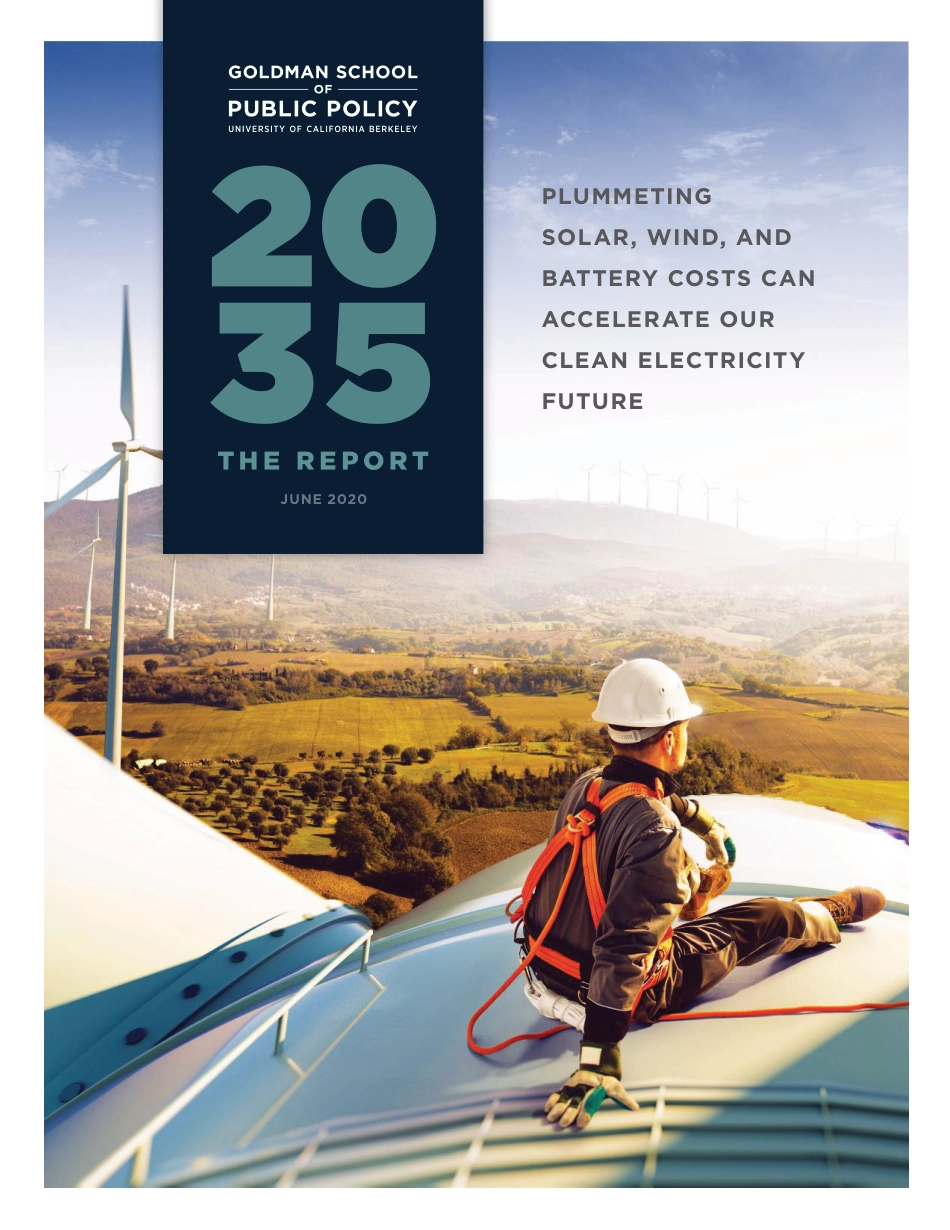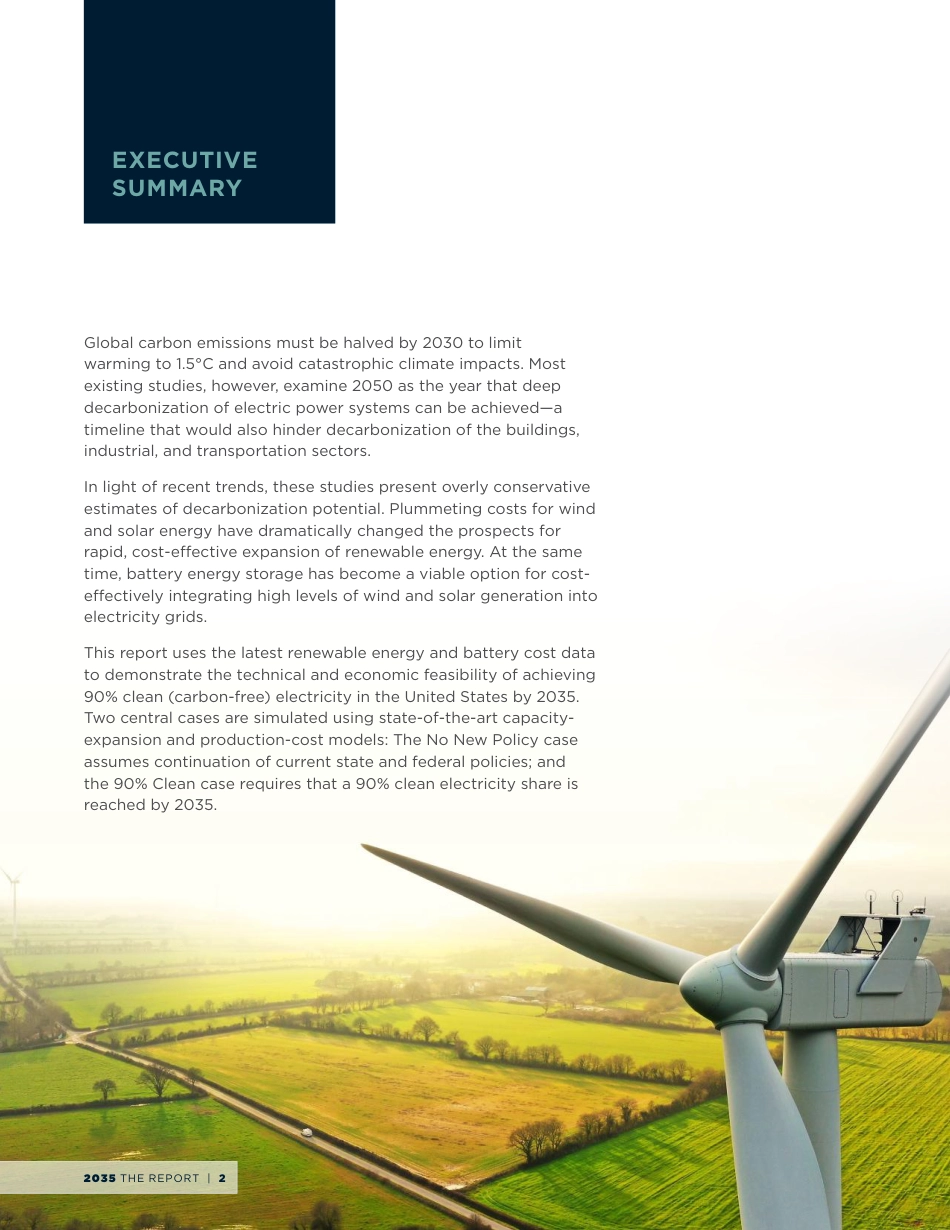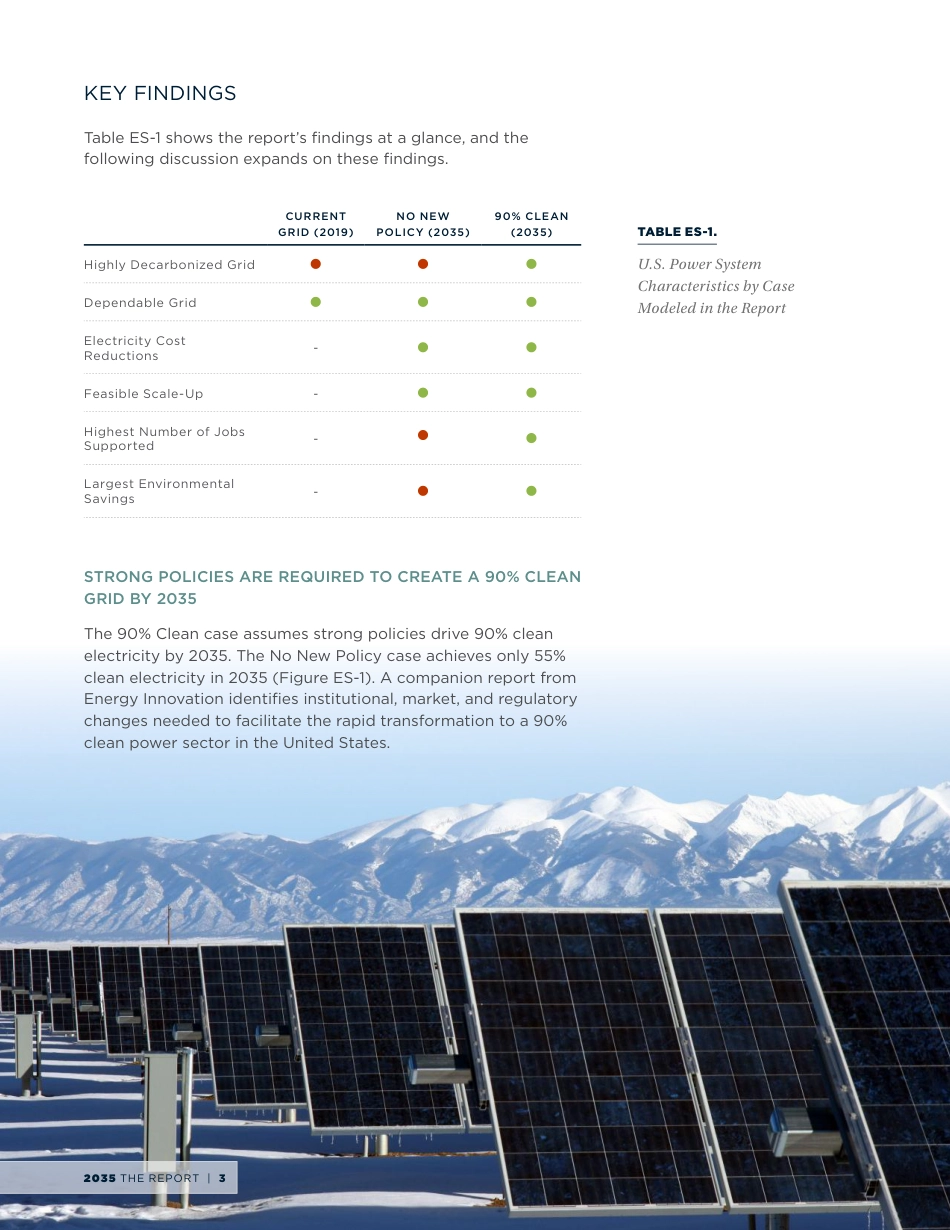PLUMMETING SOLAR, WIND, AND BATTERY COSTS CAN ACCELERATE OUR CLEAN ELECTRICITY FUTUREJUNE 2020Global carbon emissions must be halved by 2030 to limit warming to 1.5°C and avoid catastrophic climate impacts. Most existing studies, however, examine 2050 as the year that deep decarbonization of electric power systems can be achieved—a timeline that would also hinder decarbonization of the buildings, industrial, and transportation sectors.In light of recent trends, these studies present overly conservative estimates of decarbonization potential. Plummeting costs for wind and solar energy have dramatically changed the prospects for rapid, cost-effective expansion of renewable energy. At the same time, battery energy storage has become a viable option for cost-effectively integrating high levels of wind and solar generation into electricity grids.This report uses the latest renewable energy and battery cost data to demonstrate the technical and economic feasibility of achieving 90% clean (carbon-free) electricity in the United States by 2035. Two central cases are simulated using state-of-the-art capacity-expansion and production-cost models: The No New Policy case assumes continuation of current state and federal policies; and the 90% Clean case requires that a 90% clean electricity share is reached by 2035. EXECUTIVE SUMMARY2035 THE REPORT | 2KEY FINDINGSTable ES-1 shows the report’s findings at a glance, and the following discussion expands on these findings.CURRENT GRID (2019)NO NEW POLICY (2035)90% CLEAN (2035)Highly Decarbonized GridDependable Grid Electricity Cost Reductions-Feasible Scale-Up-Highest Number of Jobs Supported-Largest Environmental Savings-STRONG POLICIES ARE REQUIRED TO CREATE A 90% CLEAN GRID BY 2035The 9...



